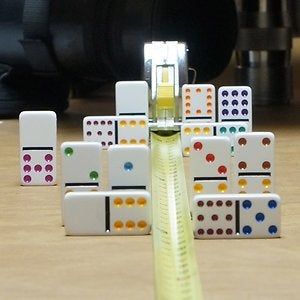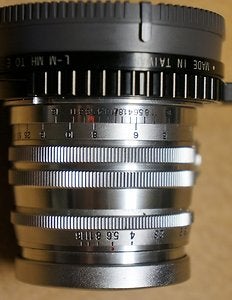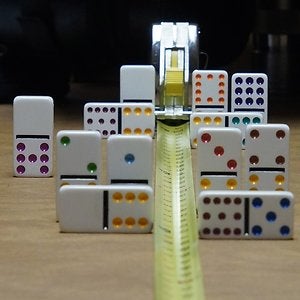dbmiller
TalkEmount All-Pro
I have been trying to wrap my mind around it, and I think there's a problem using adapted lenses.
The scale on an old lens is probably meant for film at the original "Circle of Confusion" size (.03mm).
In the old days, I would line up the infinity mark on the lens with the f-stop I have chosen, and I have the maximum (hyperfocal) DoF, right?
But with the adapted lens on the NEX, the hyperfocal distance is not the same, because the CoC is different (.03m / 1.5 = .02mm).
Taking a real world example: 50mm lens, at f11. For film, the hyperfocal distance is 24.3 feet. For the NEX, it's actually 36.4 feet. So if I'm focused at 24.3 feet, I won't have enough DoF to reach infinity.
Similarly, if I am at f8, and I look at the scale on my lens, it tells me I can get a DoF ranging from 5 to 7 feet if I focus at just under 6ft. But that's film. In actuality, on the NEX, I lose about a third of a foot (4 inches) at either end.
So trusting the scale on an adapted lens doesn't work! Right?
The scale on an old lens is probably meant for film at the original "Circle of Confusion" size (.03mm).
In the old days, I would line up the infinity mark on the lens with the f-stop I have chosen, and I have the maximum (hyperfocal) DoF, right?
But with the adapted lens on the NEX, the hyperfocal distance is not the same, because the CoC is different (.03m / 1.5 = .02mm).
Taking a real world example: 50mm lens, at f11. For film, the hyperfocal distance is 24.3 feet. For the NEX, it's actually 36.4 feet. So if I'm focused at 24.3 feet, I won't have enough DoF to reach infinity.
Similarly, if I am at f8, and I look at the scale on my lens, it tells me I can get a DoF ranging from 5 to 7 feet if I focus at just under 6ft. But that's film. In actuality, on the NEX, I lose about a third of a foot (4 inches) at either end.
So trusting the scale on an adapted lens doesn't work! Right?



